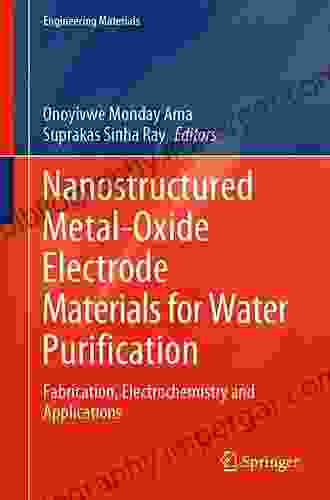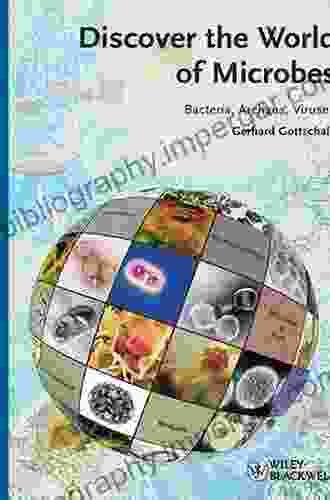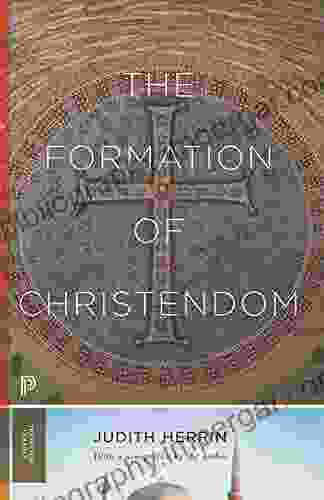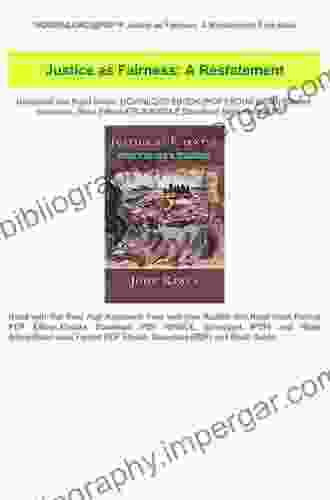Nanostructured Metal Oxide Electrode Materials for Advanced Water Purification

Water pollution is a global crisis that poses a major threat to human health and the environment. Traditional water purification methods, such as coagulation, filtration, and disinfection, are often ineffective in removing emerging contaminants, such as heavy metals, organic pollutants, and pharmaceuticals. Nanostructured metal oxide electrode materials have emerged as a promising class of materials for advanced water purification applications, offering high surface area, tunable physicochemical properties, and excellent electrochemical performance. This article provides a comprehensive overview of the latest advancements in the synthesis, characterization, and electrochemical performance of these materials, with a focus on their applications in electrocatalytic water disinfection, heavy metal removal, and organic pollutant degradation.
4.3 out of 5
| Language | : | English |
| File size | : | 17679 KB |
| Text-to-Speech | : | Enabled |
| Screen Reader | : | Supported |
| Enhanced typesetting | : | Enabled |
| Print length | : | 372 pages |
Synthesis and Characterization of Nanostructured Metal Oxide Electrode Materials
The synthesis of nanostructured metal oxide electrode materials involves various techniques, including hydrothermal synthesis, sol-gel method, and electrochemical deposition. These techniques allow for precise control over the morphology, size, and composition of the materials, which are critical factors in determining their electrochemical performance. The characterization of these materials typically involves a combination of techniques, such as X-ray diffraction (XRD),scanning electron microscopy (SEM),and transmission electron microscopy (TEM),to determine their crystal structure, morphology, and surface properties.
Electrocatalytic Water Disinfection
Nanostructured metal oxide electrode materials have shown great promise for electrocatalytic water disinfection, which involves the generation of reactive oxygen species (ROS) to kill bacteria and viruses in water. The high surface area and tunable properties of these materials allow for efficient electrocatalytic reactions, leading to the production of high concentrations of ROS. Among the various metal oxides, TiO2, SnO2, and ZnO have been widely studied for electrocatalytic water disinfection, due to their excellent electrochemical stability, high photocatalytic activity, and non-toxicity.
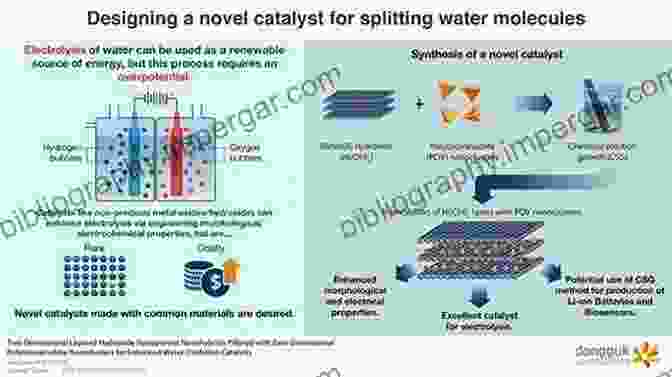
Heavy Metal Removal
Nanostructured metal oxide electrode materials have also been extensively investigated for the removal of heavy metals from water. These materials can effectively adsorb and electrochemically reduce heavy metal ions, such as lead, mercury, and copper, into less toxic forms. The high surface area and наличие of active sites on these materials facilitate strong interactions with heavy metal ions, leading to efficient removal from water. Metal oxides such as Fe2O3, MnO2, and Co3O4 have been widely used for heavy metal removal, due to their high adsorption capacities and excellent electrochemical performance.
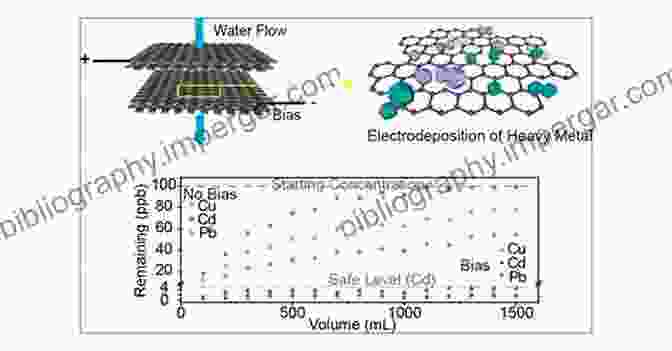
Organic Pollutant Degradation
Nanostructured metal oxide electrode materials have also been shown to be effective in the degradation of organic pollutants in water. These materials can electrochemically oxidize or reduce organic pollutants into less harmful or biodegradable compounds. The high surface area and tunable properties of these materials allow for efficient electrocatalytic reactions, leading to the degradation of a wide range of organic pollutants. Metal oxides such as TiO2, ZnO, and WO3 have been widely used for organic pollutant degradation, due to their high photocatalytic activity and electrochemical stability.
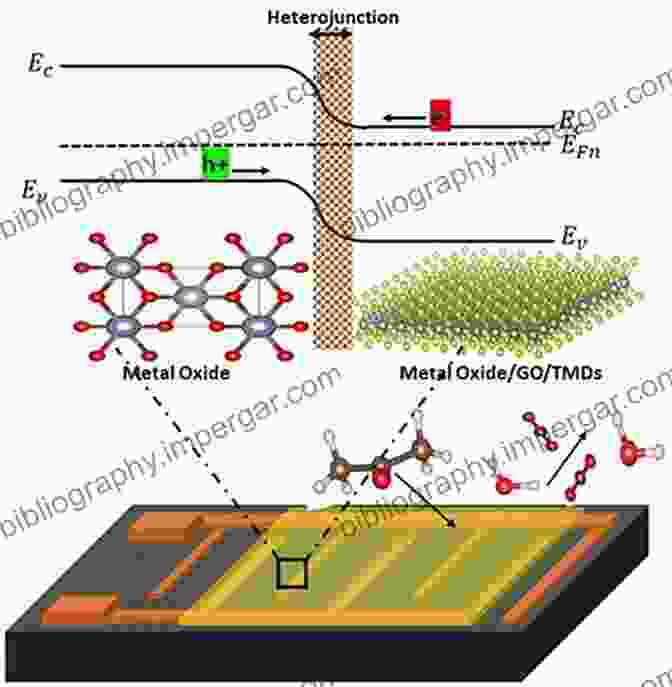
Nanostructured metal oxide electrode materials offer great promise for advanced water purification applications, due to their high surface area, tunable physicochemical properties, and excellent electrochemical performance. These materials have been shown to be effective in electrocatalytic water disinfection, heavy metal removal, and organic pollutant degradation, offering a potential solution to the global water pollution crisis. Ongoing research efforts are focused on further optimizing the synthesis and characterization of these materials, as well as exploring their applications in other water purification technologies.
4.3 out of 5
| Language | : | English |
| File size | : | 17679 KB |
| Text-to-Speech | : | Enabled |
| Screen Reader | : | Supported |
| Enhanced typesetting | : | Enabled |
| Print length | : | 372 pages |
Do you want to contribute by writing guest posts on this blog?
Please contact us and send us a resume of previous articles that you have written.
 Book
Book Novel
Novel Page
Page Chapter
Chapter Text
Text Story
Story Genre
Genre Reader
Reader Library
Library Paperback
Paperback E-book
E-book Magazine
Magazine Newspaper
Newspaper Paragraph
Paragraph Sentence
Sentence Bookmark
Bookmark Shelf
Shelf Glossary
Glossary Bibliography
Bibliography Foreword
Foreword Preface
Preface Synopsis
Synopsis Annotation
Annotation Footnote
Footnote Manuscript
Manuscript Scroll
Scroll Codex
Codex Tome
Tome Bestseller
Bestseller Classics
Classics Library card
Library card Narrative
Narrative Biography
Biography Autobiography
Autobiography Memoir
Memoir Reference
Reference Encyclopedia
Encyclopedia Fred M Phillips
Fred M Phillips Kathryn Wallace
Kathryn Wallace Fred Rogers
Fred Rogers Galina Krasskova
Galina Krasskova Galen Sharp
Galen Sharp Finn Murphy
Finn Murphy F N Howes
F N Howes Gregory S Alexander
Gregory S Alexander Nicholas Clee
Nicholas Clee Victoria Fu
Victoria Fu Fariba Adelkhah
Fariba Adelkhah Minaki Sumeragi
Minaki Sumeragi Marco Rosignoli
Marco Rosignoli Olivia Telford
Olivia Telford Mary Patricia
Mary Patricia Frances M Doss
Frances M Doss Fred Guttenberg
Fred Guttenberg Fulton J Sheen
Fulton J Sheen Froma Walsh
Froma Walsh Tim Birkhead
Tim Birkhead
Light bulbAdvertise smarter! Our strategic ad space ensures maximum exposure. Reserve your spot today!
 Samuel Taylor ColeridgeFollow ·13.4k
Samuel Taylor ColeridgeFollow ·13.4k Roald DahlFollow ·19.5k
Roald DahlFollow ·19.5k Gilbert CoxFollow ·13.5k
Gilbert CoxFollow ·13.5k Clayton HayesFollow ·18.5k
Clayton HayesFollow ·18.5k Hassan CoxFollow ·12.3k
Hassan CoxFollow ·12.3k Jared PowellFollow ·11.4k
Jared PowellFollow ·11.4k Ray BlairFollow ·4.5k
Ray BlairFollow ·4.5k Kurt VonnegutFollow ·19.8k
Kurt VonnegutFollow ·19.8k

 Alexander Blair
Alexander BlairBecoming Sports Agent Masters At Work: The Ultimate Guide
What is a Sports...

 Xavier Bell
Xavier BellUnveiling the Enchanting World of Upper Bohemia: A Review...
A Captivating...

 Chris Coleman
Chris ColemanUnveiling the Secrets: Extreme Rapid Weight Loss Hypnosis...
In the relentless pursuit of a slimmer,...
4.3 out of 5
| Language | : | English |
| File size | : | 17679 KB |
| Text-to-Speech | : | Enabled |
| Screen Reader | : | Supported |
| Enhanced typesetting | : | Enabled |
| Print length | : | 372 pages |


